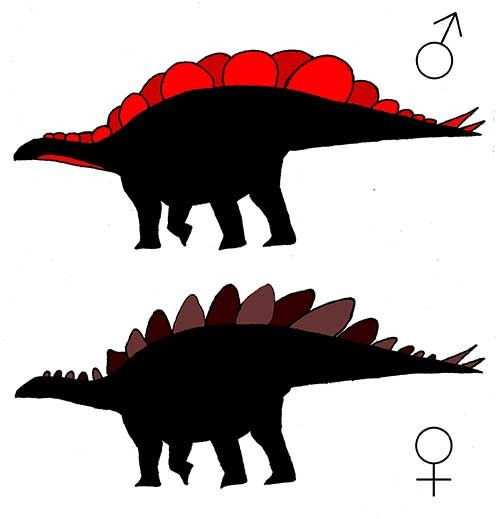Stegosaurus Plates Help Determine Sex, Offer Further Proof Of 'Sexual Dimorphism' In Dinosaurs
The bony plates on the back of a Stegosaurus, a large, herbivorous dinosaur that lived millions of years ago in the western United States, can now help scientists determine the extinct animal's sex, researchers said in a new study, published in the journal PLOS ONE on Wednesday.
The Stegosaurus, which lived about 150 million years ago during the Late Jurassic period, had two staggered rows of bony plates along its back and two pairs of spikes at the end of its tail. While the spikes were similar among individuals, the plates were of different shapes with some animals carrying tall plates while others had wide plates that were up to 45 percent larger than the tall ones. The latest study concludes that the differently shaped plates do not represent two different species, but in fact, the sex of the animal.
“It's the most convincing evidence we have so far of sexual dimorphism in a dinosaur,” excluding birds, the living descendants of dinosaurs, Evan Saitta, a graduate student of paleobiology at the University of Bristol in the U.K. and the study’s lead author, told Live Science. The term “sexual dimorphism” is used to describe distinct anatomical differences between males and females of the same species.

Previous studies have analyzed sexual dimorphism in dinosaurs, but they do not explain other possible explanations for why anatomical differences might be present among fossil specimens. After spending six years in central Montana as part of an excavation crew digging up the first Stegosaurus “graveyard,” Saitta was able to test these alternative explanations in the species called “Stegosaurus mjosi.”
According to researchers, the group of dinosaurs excavated in Montana only varied in their plates, and the two varieties were not a result of growth. Further analysis revealed that the bone tissues in the plates had stopped growing in both varieties.
“As males typically invest more in their ornamentation, the larger, wide plates likely came from males,” Saitta said in a statement. “These broad plates would have provided a great display surface to attract mates. The tall plates might have functioned as prickly predator deterrents in females.”
Stegosaurus may not be the only dinosaur type to show sexual dimorphism as other species have also showed potentially sexual features, such as extra-large crests or nose horns that can help scientists determine their gender, the researchers said.
© Copyright IBTimes 2024. All rights reserved.






















